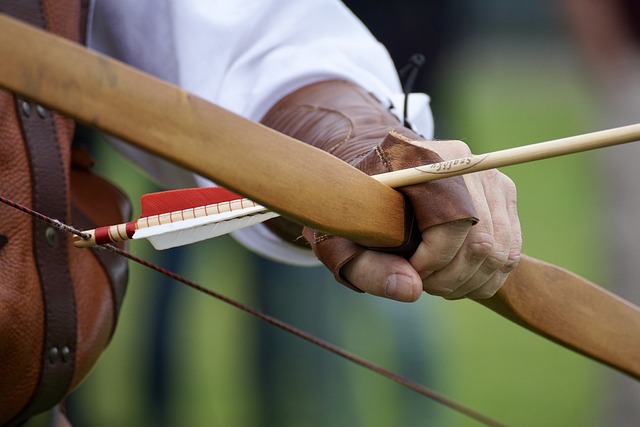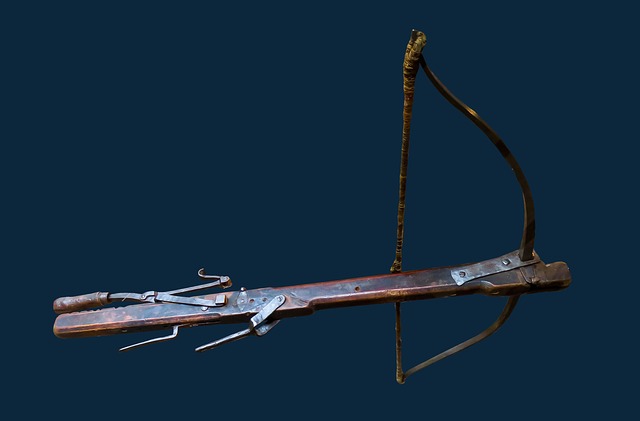
Crossbows vs. Bows: Which Is Best For Hunting?
This is it. Crossbows vs. bows. One of the oldest archery debates, spanning centuries of hunting and sport across innumerable countries and continents.
The short answer: It’s complicated.
The long answer: It really depends on your personal preference. Whether you shoot arrows casually or competitively, whether you go crossbow shooting for fun or bowhunting for food, every type of bow and crossbow out there has its own advantages and disadvantages, its own pros and cons, and it’s up to you to decide which one is better for you.
This article gives you a crash course on crossbows vs. bows, including some of the features that sets them apart and the strengths and weaknesses that makes each unique:
Bows: Long, Recurve, and Compound
The most common and popular among archery and hunting bows alike are the longbow, compound bow, and recurve bow. All three differ in design, accessibility, and velocity.
The Longbow
This traditional design is named after the long, single piece of slightly curved wood that comprises the entire body of the bow.

As both were used in medieval warfare, these bows are particularly relevant in the crossbows vs. bows debate. Their enormous size packs a significant amount of energy when drawn.
Because of their size, however, longbows are not easy to use for target practice, let alone hunting. Not only are they enormous, but they also lack both arrow rests and sights, making them difficult to aim. And although their size packs energy, their simple design offers significantly lower arrow velocity than their recurve and compound counterparts, and they fall way short of the velocities at which crossbows shoot.
That said, this high-level shooting difficulty is a worthy challenge for master archers who want to experience one of the oldest bow designs.
Average Longbow Specifications:
- Arrow Speed: 140 to 180 FPS (feet-per-second)
- Draw Weight: 30 to 60 pounds
- Length: 72 inches
- Effective Hunting Range: 20-30 yards
The Recurve Bow
Like the longbow, the recurve bow is also named for its shape, and it’s an ancient bow style used as early as the 7th century BCE. Unlike the longbow, the recurve bow curves back away from the archer at each end. This makes the limbs act similarly to a spring when shooting an arrow. That transfers energy into a shot much more efficiently than the simpler single curve design of a longbow.
Recurve bows are the go-to “beginner” bow, as they are easy to use and easy to carry. Nevertheless, they are by no means only used by novice archers. Many experienced archers enjoy using and mastering this traditional style of bow.
Average Recurve Bow Specifications:
- Arrow Speed: 160 to 240 FPS
- Draw Weight: 35 to 60 pounds
- Length: 56 to 62 inches
- Effective Hunting Range: 20-30 yards
The Compound Bow
The compound bow complicates the crossbows vs. bows debate, as both introduce mechanical complexity to enhance traditional design. Not to mention that there is a compound crossbow counterpart too (which we’ll get to a little later).
This type of bow utilizes a complex system of wheels, pulleys, and cables for efficient energy storage. They also introduce a unique benefit known as “let-off.” Let-off reduces draw weight, meaning an archer can hold the bow at full-draw for much longer than other bows without as much strain. This also makes drawing the bow easier.
Many compound bows offer adjustable draw weights, letting you crank your pull up or down to your comfort level.
Average Compound Bow Specifications
- Arrow Speed: 250 to 320 FPS
- Draw Weight: 40 to 70 pounds
- Length: 28 to 33 inches
- Effective Hunting Range: 20 to 30 yards
Crossbows: Recurve and Compound

The most common and popular choices for crossbow shooting these days are the recurve crossbow and the compound crossbow. Crossbows are typically easier to shoot, but can also be more difficult to cock. That’s why more modern crossbows have begun to incorporate technology like CenterPoint’s Anti-Dry Fire system to ensure safety and stability.
As with the bows listed above, recurve and compound crossbow designs are very different:
The Recurve Crossbow
When taking a look at recurve crossbows vs. recurve bows, they share notable similarities in design: curved, flexible limbs on either side that bend under the weight of the pulled-back bowstring. Despite the large frame, they are sturdy and reliable hunting companions. The lack of extra mechanisms makes field maintenance much easier, and fewer parts means a lower chance of something breaking.
Recurve crossbow shooting is trickiest in one regard: cocking. They typically do not have built-in cranking mechanisms — you must use your physical strength alone or use a rope cocker. Beyond that, there’s little to complain about on the range or in the woods!
Average Recurve Crossbow Specifications
- Arrow Speed: 280 FPS to 320 FPS
- Draw Weight: 80 to 150 pounds
- Length: 30 to 35 inches
- Effective Hunting Range: 20 to 30 yards
The Compound Crossbow
Usually shorter, slimmer, and heavier than the recurve crossbow, the compound crossbow uses a mechanical system of cables and cams similar to that of the compound bow. This greatly increases string tension, which begets high speeds and deadly accuracy, even when compared to the recurve crossbow. In terms of the speed of the arrows shot by compound crossbows vs. bows, there’s no contest.
The main drawbacks associated with shooting a compound crossbow include much heavier draw weight when cocking, and tend to be much more expensive — which we’ll get into a little later.
Average Compound Crossbow Specifications
- Arrow Speed: 280 FPS to 400+ FPS
- Draw Weight: 125 pounds to 200+ pounds
- Length: 16 inches to 20 inches
- Effective Hunting Range: 20 yards to 35 yards
Crossbows vs. Bows: Hunting
Now for what this article is really about: how crossbows and bows compare when hunting.
Hunting Longbows
We mentioned that longbows aren’t the best for hunting or target-shooting earlier, but as they’re still relevant to this debate, we want to elaborate. They’re not as easy to pick up and use “out of the box” as compound bows. Compared to crossbow shooting, they’re surprisingly challenging to use in a practical hunting situation. Given the simple design, an archer must draw and hold its entire weight, and then the speed of its arrows are not as impressive as even the closely-related recurve bow. While still very possible, especially for experienced archers, this does affect your ability to get an ethical kill on large game. Additionally, their draw weight and bulky design make them inconvenient for ground hunting.
Crossbows (or any other bow, really) take the cake here for objective efficacy. However, longbows are perfect for archers who are passionate about traditional shooting and want a challenge instead of an easy shooting experience.
Recurve Hunting Bows
Recurve hunting bows, like hunting longbows, take skill and finesse to master, though they are not nearly as difficult to draw and aim. When comparing either crossbow design vs. recurve bows, the recurve is faster to draw, but doesn’t shoot quite as fast as a crossbow.
Recurve hunting bows offer more challenge than both crossbows and compound bows, especially in regards to holding at draw length. Nevertheless, they are entirely viable and exciting options for hunting — in the hands of an experienced marksman, a recurve bow can readily bring down wild turkey and whitetail deer.
Compound Hunting Bows
With the reduced felt draw weight at full draw due to let-off, archers can take their time aiming without getting fatigued as quickly. In addition to let-off, one of the biggest draws to compound bows is their customization with accessories, as compound bows offer much more than do recurve or long bows.
On top of that, arrows shot from a compound bow pack a far more of a punch than their recurve brethren. In the battle of crossbows vs. bows, they hold their own in terms of take down capabilities. Some of the most common targets of compound bowhunters include not only turkey and deer, but also much bigger quarry like bear and even moose! Because of how effective they are, they’re an entirely viable alternative to crossbows. It comes down to whether you prefer drawing your bowstring back and firing an arrow yourself or the simplicity of crossbow firing.
Crossbows For Hunting
Obviously, hunting with crossbows vs. hunting with bows are entirely different experiences. With both recurve and compound crossbow shooting, it does not require strength to stay cocked, and when shot, it will do some serious damage. That’s one of the reasons both compound and recurve crossbows are such common choices for hunting.
Thanks to the sheer kinetic energy of a crossbow arrow in flight, a crossbow is your go-to option when you want to take down your target — especially in combination with a lethal mechanical broadhead. That’s why crossbows are primarily used for big game hunting.
Bear in mind, however, that if you miss, it will take much longer to prepare your next shot with a crossbow than a conventional bow — though, with practice, it can still be done efficiently and quietly. And while most CenterPoint crossbows include our innovative Whisper Quiet Silencing Systems to reduce noise, most compound crossbow shots make a lot of extra noise — which means you may only have one shot. Make it count!
Crossbows vs. Bows: Which Is Best For You?
No, seriously: we’re really asking you this time.
The best way to figure out the best bow for you is to get out there and try them out for yourself. Depending on your strength, experience, and archery preferences, it's tough to recommend crossbow shooting over compound bow shooting, or to pick a side when comparing crossbows vs. bows.
That’s because there is so much enjoyment and adventure to be found in each and every design. All sorts of factors go into the best choice for your unique marksmanship. That’s why, ultimately, the answer to the original question is… it’s complicated. While crossbows are objectively better in speed and accuracy, bows may be better in terms of experience — connecting with the ancient heritage of bowmanship that has been passed down for thousands of years.
And that’s what’s important to remember. Whatever side you take in the age-old crossbows vs. bows struggle, remember that archery isn’t just a fun sport or hobby. It’s an ancient, traditional, and fundamentally human activity, dating back in all forms for hundreds and thousands of years. Connect to your roots, head to the range or out in the field, and take your best shot today.
